How to Use a Featherboard When Rip-Cutting Wood on a Tablesaw
Make cleaner cuts and prevent dangerous kickback with this handy tablesaw accessory.
A featherboard serves two important purposes: It holds the board you are cutting tight to to your tablesaw fence, which makes for cleaner, straighter cuts; and it prevents the sawblade from dangerously kicking the board backward, which could cause serious injuries or damage. Featherboards work essentially like a flexible, spring-loaded fence with angled “fingers” that only allow a board to slide freely in the direction of the sawblade.
Featherboards are not just limited to tablesaws—they’re great accessories for shapers and router tables too. If your saw or shaper has the right type of fence (i.e., a tall fence with a groove), you can also use a featherboard to keep stock down flat on the table, which is particularly helpful if you’re cutting a dado or a trim detail that needs to be at a very specific depth.
Where to get one
Being a bit of a specialty tool, a featherboard may not be available at your local big box store, but high-quality building supply stores and tool dealers should have them in stock. Or you could order one online.
This pair of featherboards from Kreg is well-rated and available at a decent price:
Kreg PRS3020 True-FLEX Featherboard 2-pack
Another good option, which Fine Homebuilding‘s Justin Fink reviewed in a recent issue, is this unique foam-fingered featherboard:
Bow Products FeatherPro
You can also make your own
If you’ve got some scrapboards with tight, straight grain lying around, you can make your own featherboard for free, but the hassle of securely clamping a homemade jig to your saw might convince you that it’s worth the cost to buy one that slides right into the slots on your saw and easily clamps down with the twist of a knob.
Here’s how to use a featherboard:
- If you’re using a manufactured featherboard, it likely will just slide into the miter groove on your tablesaw (if it’s a homemade featherboard, you will just place it on the table)
- Position the tool with the angled end pointed in the feed direction
- Make sure the featherboard is slightly in front of the blade to prevent waste from interfering with the cut
- To get it into the correct position for the particular cut you’re making, lower the blade with the tool off and place the stock against the fence
- Then press the featherboard against the stock and tighten the locking mechanism (or, if using a homemade model, use a pair of short woodworking C-clamps or bar clamps to clamp it to the table)
- Before cutting, test the fit in a dry run with the blade down; the workpiece should move forward easily but be hard to pull back
- Once positioned, raise the blade and you’re ready to rip
- Turn on the saw and carefully push the workpiece through the blade; use a push stick if necessary to keep your hands safely away from the blade while cutting
Related articles:
- Tool Test: SawStop’s Portable Tablesaw
- Make a saw guide for faster, cleaner cuts
- A User’s Guide to Featherboards

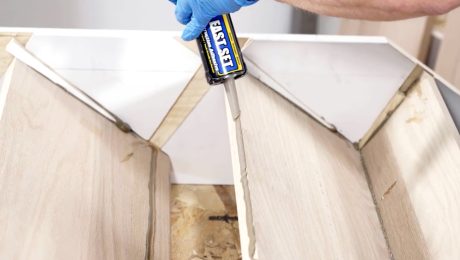
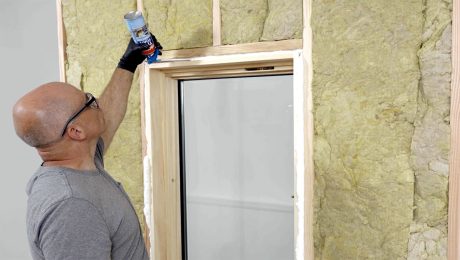
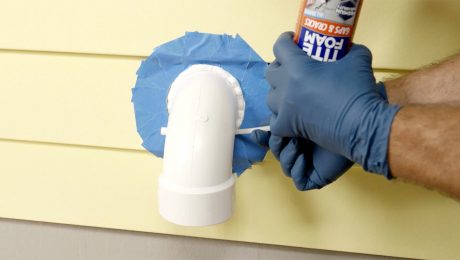











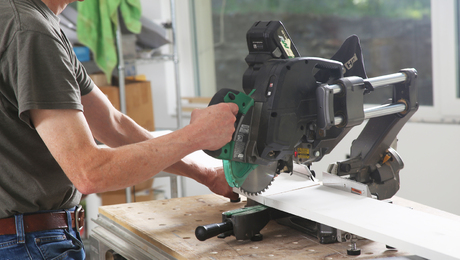
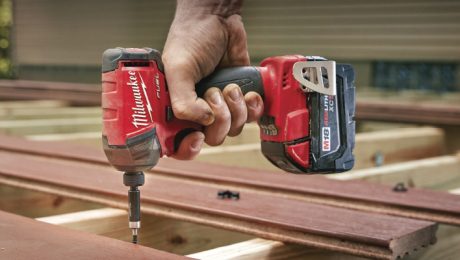
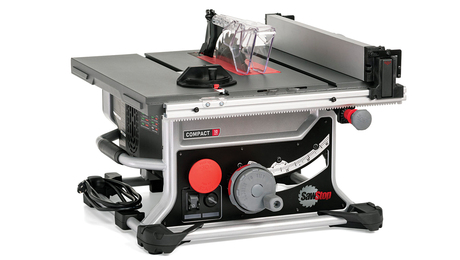
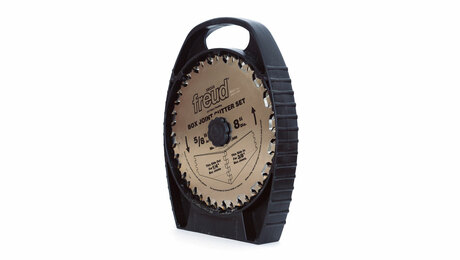
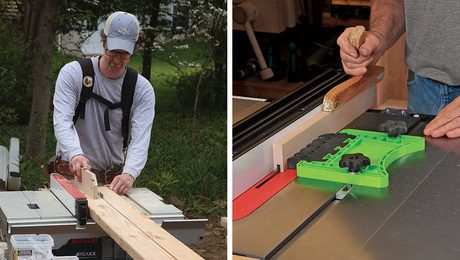










View Comments
Very informative!